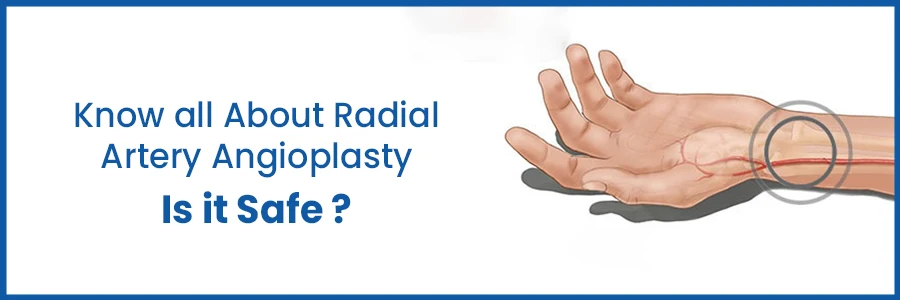Know all About Radial Artery Angioplasty - Is it Safe?

Radial Artery Angioplasty, commonly called Transradial Angioplasty (TRA), is a modern and less invasive coronary heart surgery. It includes going through the wrist's radial artery to fix blocked or narrowed blood vessels, a procedure called Angioplasty. TRA has emerged as famous because it's safer and has benefits over older methods. Using the wrist in preference to different routes reduces the hazard of bleeding and complications. This means patients get better quickly and are more secure overall. A significant plus of TRA is that it's greater for patients. In quick, this article is a guide to understanding how safe it is and common questions on Radial Artery Angioplasty. Whether you're a healthcare expert or a person thinking about this procedure, you will get valuable insights to make informed choices about coronary heart treatments.
Is it Safe?
Radial Artery Angioplasty is a secure and effective procedure to treat coronary heart issues. It's considered secure as it uses the radial artery within the wrist as opposed to the femoral artery inside the groin, which is common in conventional tactics. Radial artery(located in the wrist) is smaller and closer to the surface, decreasing the danger of bleeding problems. It not only makes the method safer but also enables patients to get better faster. By picking the radial artery, cardiologists show they are focused on making coronary heart tactics safer and higher for patients.
TRA is a Better Option Compared to Using the Femoral Approach
Going via the wrist rather than the groin in medical techniques has a group of benefits, which are given below.
- First off, there's less danger of bleeding because the wrist artery is less difficult to control and stop bleeding if it takes place.
- People generally experience much less discomfort at some point and after the technique when they use the wrist in place of the groin.
- Can regularly begin strolling faster, which means quicker healing.
- It avoids the groin location, lowering the risk of having an infection.
So, by deciding on the wrist way, medical doctors usually make certain things safer and suitable for sufferers.
Bleeding Risk with TRA
While no scientific process is completely danger-loose, it is well worth referring to Transradial Angioplasty (TRA) as it has a lower danger of bleeding problems in comparison to the femoral method. The radial artery used in TRA is closer to the surface, making it easier for doctors to manage any bleeding if it takes place.
After TRA angioplasty, can I still use my arms?
Yes, one cool thing about transradial angioplasty (TRA) is that you can begin using your hand and arm properly after the system. It doesn't cause plenty of pain, so you can get back to doing all your everyday stuff quite quickly. This brief healing is tremendous as it approaches you to return to your everyday activities faster. TRA is designed to ensure you can use your hand and arm soon after, making the entire system more convenient for you.
How much radiation will I get exposed to?
In Transradial Angioplasty (TRA), you generally get much less exposure to radiation as compared to the femoral technique. It's essential to realize that the exact quantity of radiation can be exchanged based totally on such things as your private situation and how complicated the manner is. Because the radial method is a less difficult way to attain the coronary heart, doctors frequently use much less radiation, which is better for your fitness.
How much time does it take to get better?
After having Transradial Angioplasty (TRA), most humans can return to their typical activities quicker than with the femoral method. Usually, in an afternoon or two, you can pass back to every day with only a few matters to be careful about. But consider how speedy you get better relies upon such things as your typical fitness and how complicated the process turned. This awareness of a quicker recovery time in TRA shows that the procedure is designed to be smooth for the patient.
Do all hospitals provide the TRA technique?
Not all hospitals may offer Transradial Angioplasty (TRA), even though it's becoming more common. It's a fantastic idea to test along with your health practitioner to see if TRA is to be had and if it is the right preference for you. Your healthcare issuer lets you parent out if the health facility you'll have this option and if it suits your specific needs. They're the quality humans to manual you on what's to be had and what the quality of your fitness is. Talking to them ensures you're making choices that suit your fitness dreams and what you're good with.
